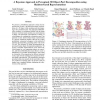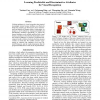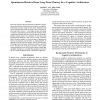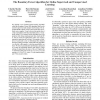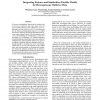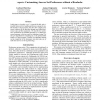AAAI
2015
9 years 9 months ago
2015
We introduce an active learning framework designed to train classification models which use informative projections. Our approach works with the obtained lowdimensional models in...
AAAI
2015
9 years 9 months ago
2015
We present a probabilistic approach to shape decomposition that creates a skeleton-based shape representation of a 3D object while simultaneously decomposing it into constituent p...
AAAI
2015
9 years 9 months ago
2015
Utilizing attributes for visual recognition has attracted increasingly interest because attributes can effectively bridge the semantic gap between low-level visual features and hi...
AAAI
2015
9 years 9 months ago
2015
This paper presents the first functional evaluation of spontaneous, uncued retrieval from long-term memory in a cognitive architecture. The key insight is that current deliberate...
AAAI
2015
9 years 9 months ago
2015
We describe a new instance-based learning algorithm called the Boundary Forest (BF) algorithm, that can be used for supervised and unsupervised learning. The algorithm builds a fo...
AAAI
2015
9 years 9 months ago
2015
In order to be fully robust and responsive to a dynamically changing real-world environment, intelligent robots will need to engage in a variety of simultaneous reasoning modaliti...
AAAI
2015
9 years 9 months ago
2015
We present a probabilistic framework for learning with heterogeneous multiview data where some views are given as ordinal, binary, or real-valued feature matrices, and some views ...
AAAI
2015
9 years 9 months ago
2015
In this paper we describe asprin1 , a general, flexible, and extensible framework for handling preferences among the stable models of a logic program. We show how complex prefere...
AAAI
2015
9 years 9 months ago
2015
Spectral clustering, a graph partitioning technique, has gained immense popularity in machine learning in the context of unsupervised learning. This is due to convincing empirical...
AAAI
2015
9 years 9 months ago
2015
Much of the focus on finding good representations in reinforcement learning has been on learning complex non-linear predictors of value. Policy gradient algorithms, which directl...

